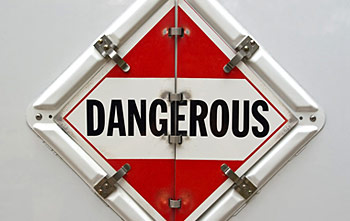Sign in or register for an account.

OSHA Hazard Communication
This online CNE course is designed to assist both employers and employees in learning about work hazards and how to protect themselves. The OSHA Hazard Communication Standard (HCS) is OSHA's way of ensuring safety to employees who potentially come in contact with hazardous chemicals. The Hazard Communication Standard (HCS) is now aligned with the UN Globally Harmonized System of Classification and Labeling of Chemicals (GHS). This occupational safety and health standard update is intended to address comprehensively the issue of classifying the potential hazards of chemicals, and communicating information concerning hazards and appropriate protective measures to employees.
All workplaces that use or contain hazardous chemicals or materials must have clearly displayed labels and supply safety data sheets (SDS) to all employees that come in to contact with the hazardous materials. Employers are required to train workers on the new labels elements and safety data sheets (SDS) format to facilitate recognition and understanding.
Questions? Check out our FAQs page and How Online IV Certification Works!
Objectives
Upon completion of this course, the participant will be able to:
- Explain what constitutes a hazardous substance and the risks associated with them.
- Demonstrate an ability to recognize the presence of the hazardous materials used in the workplace.
- Describe the use of Safety Data Sheets (SDS).
- List the routes of entry for hazardous materials to enter the body, and of the effects that the specific chemical found at the site might have on people, property, or the environment.
- Identify the common hazard communication standard pictograms.
Curriculum
Chapter 1: Introduction
- How Can Workplace Hazards be Minimized?
- What is Hazard Communication
- Hazard Determination
- Labeling
- Safety Data Sheets (SDS)
- Major changes to the OSHA Hazard Communication Standard
- What information is contained in an SDS?
- Where can I find an SDS?
- Fire
- Explosives
- Chemical Reactivity
- Gas Cylinder
- Toxicity versus Hazard
- Toxicity versus Dose
- Exposure
Chapter 5: Poisons-Corrosives-Radiation
Chapter 6: Hazard Communication Standard Pictogram
- Health Hazard
- Flame
- Exclamation Mark
- Gas Cylinder
- Corrosion
- Exploding Bomb
- Flame Over Circle
- Environment
- Skull and Crossbones
- Substitution
- Engineering Controls
- Safe Work Practices
- Personal Protective Equipment (PPE)
- Training
- California Bill 241
- Implicit Bias in Healthcare
- What is Implicit Bias?
- Implications of Implicit Bias in Healthcare
- How to Reduce Implicit Bias
Price: $12.00
Contact Hour: 1

Course Author

Maureen Sullivan-Tevault
Maureen graduated nursing school in 1981 and has spent her years in the Emergency and Trauma field, including nursing positions as the Emergency Department Manager, Director of Staff Education, Trauma Coordinator, Cardiology Nurse Navigator, and Stroke Program Manager.
Read Full BioCourse Accreditation
See our Accreditation Statements page to view our accreditation information.